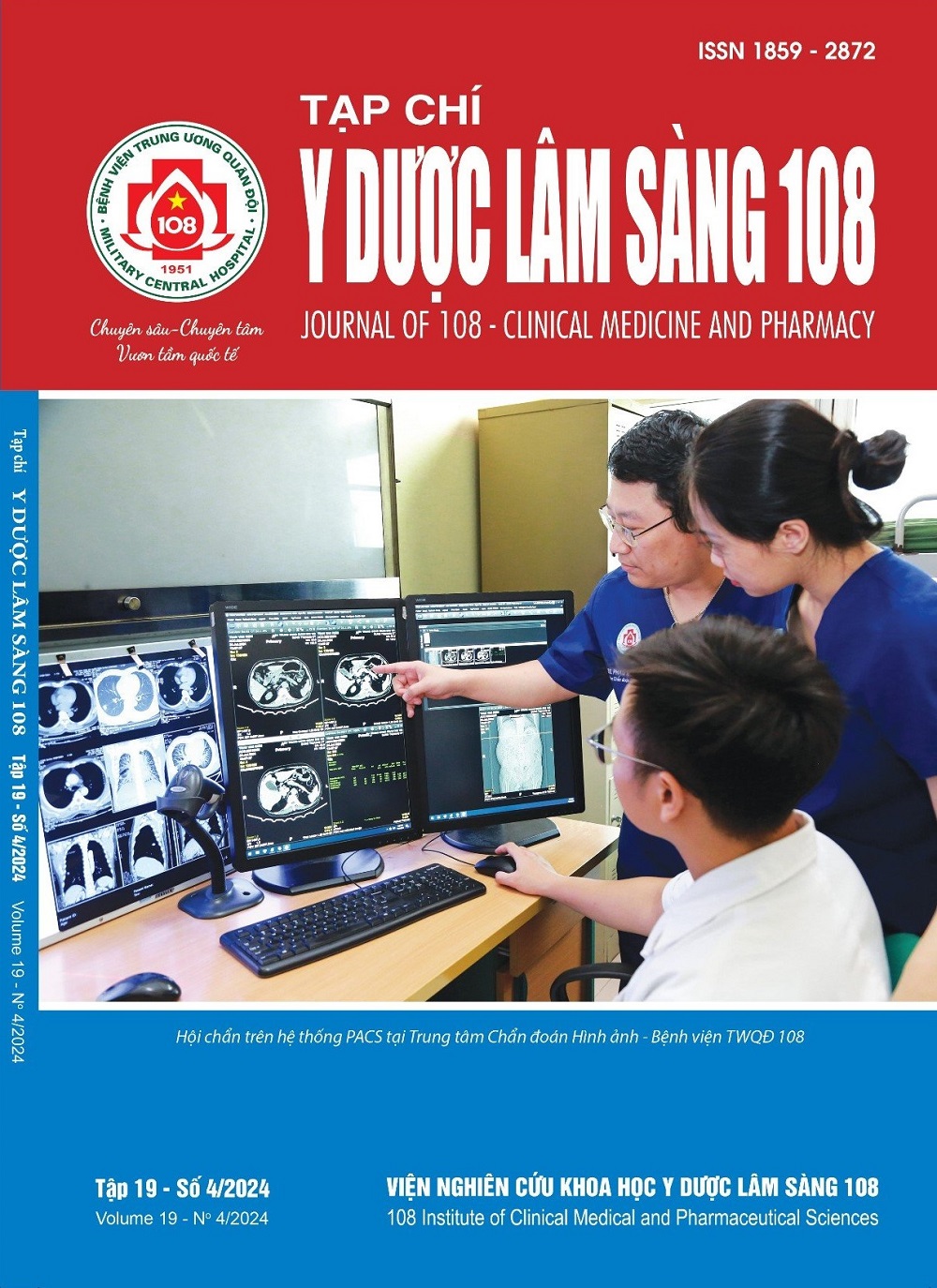Application of organ transplant resuscitation protocol for brain-dead potential donors: Outcome at 108 Military Central Hospital
Main Article Content
Keywords
Abstract
Objective: To evaluate the outcome of organ transplant resuscitation protocol for brain-dead potential donors. Subject and method: Retrospective study of 30 brain-dead cases undergoing organ transplant resuscitation at 108 Military Central Hospital from 1/2020 to 12/2023. Result: The mean age was 32.91 years old, most were among working age, were dead due to traffic accidents. 90% were male. 100% had normal cardiac ejection fraction and structure, 77.2% required vasopressor (noradrenaline). 80% maintained PaO2 > 90mmHg, 2/30 (6,67%) were hypercapnia, well managed from post-mortem day 2. Kidney and liver function were within normal limit with increase in urine output: 9/21 (42.9%) > 1.5ml/h in day 3, suggesting diabetes insipidus. Glycemia was 9.24-10.37mmol/L, pancreatic enzymes were within normal limit. Rate of organs standardized for transplantation was 53.3% for kidney, 36.7% for liver, 46.7% for heart and 13.3% for lung. 2 cases became multi-organ donors, with 2 hearts, 4 lungs, 4 kidneys, 2 livers transplanted. Conclusion: Organ transplant resuscitation protocol for brain-dead potential donors were feasible, safe, and beneficial as an important resource for standardized organ for end-stage organ failure patients.
Article Details
References
2. Copeland H, Hayanga JWA, Neyrinck A et al (2020) Donor heart and lung procurement: A consensus statement. J Heart Lung Transplant.
3. Kumar L (2016) Brain death and care of the organ donor. J Anaesthesiol Clin Pharmacol 32(2): 146-152. doi: 10.4103/0970-9185.168266.
4. Mascia L, Pasero D, Slutsky AS et al (2010) Effect of a lung protective strategy for organ donors on eligibility and availability of lungs for transplantation: A randomized controlled trial. JAMA 304(23): 2620-2627.
5. New South Wales (NSW) Goverment - Office of the Chief Health Officer Ministry of Health (2016) Management of the adult brain dead potential organ and tissue donor. Guideline.
6. Reyes KG, Mason DP, Thuita L, Nowicki ER, Murthy SC, Pettersson GB, Blackstone EH (2010) Guidelines for donor lung selection: Time for revision?. The Annals of thoracic surgery 89(6): 1756-1765.
7. Salim A, Martin M, Brown C, Rhee P, Demetriades D, Belzberg H (2006) The effect of a protocol of aggressive donor management: Implications for the national organ donor shortage. Journal of Trauma and Acute Care Surgery 61(2):429-433.
8. Martin S (2016) Beating heart organ donation', in Andrew Webb, and others (eds), Oxford Textbook of Critical Care, 2 edn, Oxford Textbook (Oxford, 2016; online edn, Oxford Academic, 1 Apr. 2016).
9. Von Ziegler F, Helbig S, Kreissl N et al (2013) Norepinephrine versus dopamine pretreatment of potential heart donors - impact on long-term outcome. Ann Transplant.
10. Weiss J, Coslovsky M Keel I et al (2014) Organ donation in Switzerland-an analysis of factors associated with consent rate. PLoS One 9(9): 106845.
 ISSN: 1859 - 2872
ISSN: 1859 - 2872
